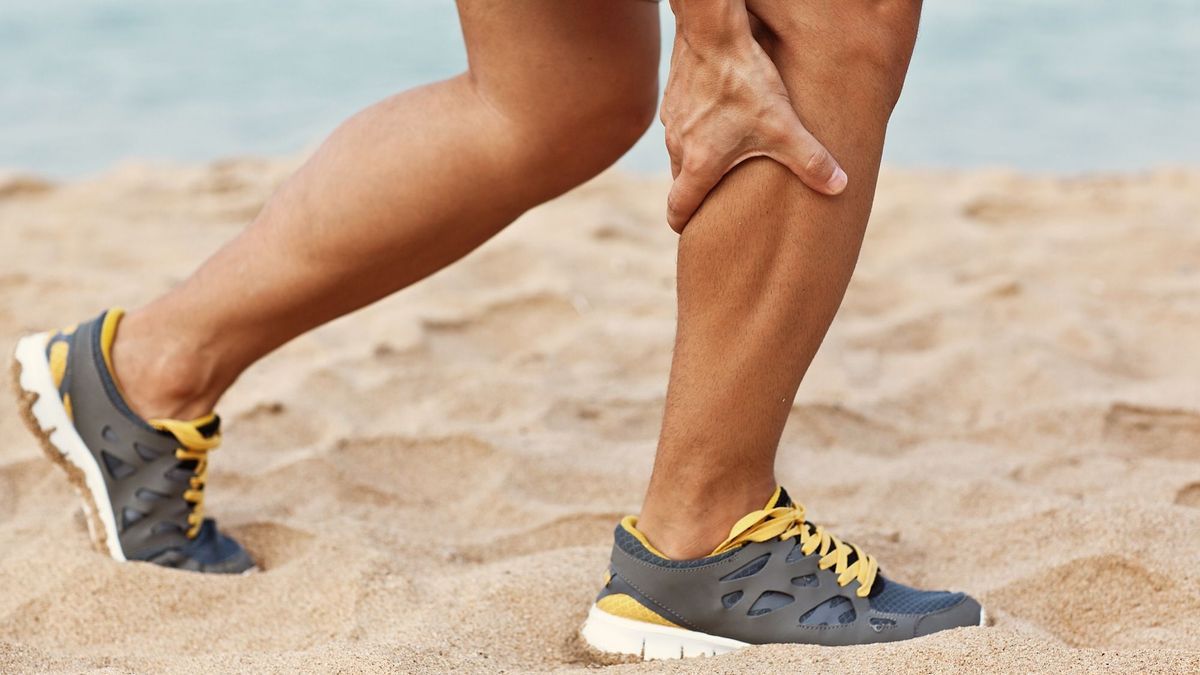
As violent as it is sudden, the calf cramp causes intense but nonetheless benign pain, which generally disappears quickly, assures Nicolas Bertrand, masseur-physiotherapist and osteopath (Paris), author of “The Encyclopedia of Massage” (Ed. Flammarion). For TipsForWomens, the latter reviews the causes and symptoms of this muscular contraction, and gives us his advice to relieve it quickly and prevent its occurrence.
Relatively common, calf cramps cause intense pain which does not allow the foot to rest and resume activity. What are the consequences for health? What causes these cramps, including nighttime cramps? Can diseases cause them? Is the lack of magnesium at play? What is the treatment, beyond stretching? All the answers from Nicolas Bertrand, masseur-physiotherapist and osteopath (Paris).
What is a calf cramp?
A cramp is a involuntary contraction of muscles which appears suddenly. Unlike a muscle contracture, the contraction responsible for the cramp is transient, it only lasts a few seconds to a few minutes at most. The calf muscles, because they are particularly used on a daily basis (walking, running, jumping, etc.) and because they are subject to the constraints of the upper and lower body, are among the muscles most frequently affected by cramps. “Unilateral or bilateral, a calf cramp creates functional impotence and leads to an immediate cessation of activity or awakening when it occurs during the night.specifies Nicolas Bertrand.
Causes of a calf cramp
Even if the causes of a calf cramp are not clearly established, several risk factors are commonly accepted, underlines the physiotherapist. “Calf cramps are most often due to a electrolyte imbalance (sodium, magnesium, potassium, calcium, bicarbonates), itself linked to a dehydration or to a muscle fatigue resulting from a prolonged effort as we see in certain high-level athletes”.
They can also be caused by stress. “When a muscle contracts, only part of the muscle fibers are used, which allows the other part to take over. In the event of very intense stress, too many muscle fibers are used at the same time; this permanent contraction of the muscle, which manifests itself in the form of a muscle spasm, leads to muscle fatigue which can cause a cramp.explains Nicolas Bertrand.
Some medical conditions can also cause calf cramps, such as diabetes, venous insufficiency, certain heart diseases and peripheral neurological disorders such as impatience, continues the specialist. “In this case, the cramps are due to a nerve conduction problem which prevents the proper transmission of the nerve signal to the calf..
Another risk factor: aging. “The risk of calf cramps increases with age. This is due to changes in the composition of muscles, a more frequent electrolyte imbalance and a higher prevalence of diseases favoring the appearance of cramps.underlines Nicolas Bertrand.
What are the symptoms of a calf cramp?
The main symptom of a calf cramp is pain. As intense as it is sudden, this pain is similar to that caused by very strong calf tightness. The contracted muscle is hard to the touch, and its strain increases the pain.
Treatment of a calf cramp
There is no specific treatment to relieve a calf cramp. Nevertheless, thestretching immediate action of the muscle for a few minutes allows the muscle fibers to be lengthened, the muscle to relax and a good connection to be reestablished between the nerve which sends the information and the muscle which receives it. Simply stand up with your arms resting on a wall and your painful leg stretched backwards to lengthen the muscle. The pain usually goes away within seconds or minutes.
Nicolas Bertrand also advises plenty the contracted calf, to drink water rich in minerals and trace elements or, better, pickle juice! “According to some studies, the acidic liquid in which the pickles are bathed triggers a sort of update of the autonomic nervous system and deactivates the feeling of cramp thanks to a rapid rebalancing of the electrolyte content of the muscles.. The evidence of its effectiveness remains thin but, unless you are hypertensive or suffer from certain digestive disorders, there is little risk in trying this grandmother’s remedy, surely more scientifically reliable than Marseille soap in bed. to relieve cramps…
How to prevent a calf cramp?
Relieving a calf cramp is good, avoiding getting one is better! To prevent cramps, it is advisable to hydrateparticularly in anticipation of an intense effort, to practice physical activity on a regular basis to accustom the muscles to the effort and to warm up systematically at the start of the session. Rather than stretching immediately at the end of the session, at the risk of accentuating the muscle damage induced by the effort, Nicolas Bertrand recommends a gradual return to calm. “Just as warming up prepares the body for exercise by sending blood to the periphery, returning to calm via a few laps of the bike or a little walk after intense effort promotes the return of blood to the general circulation and prepares the body for exercise. “organization at the cessation of activity”, he explains. To speed up the process, the specialist recommends applying cold to the calf or practicing the “Scottish shower”, which consists of alternating the jet of hot and cold water, finishing with cold water.
Finally, last advice from the physiotherapist: “Cramps are a benign phenomenon that should remain occasional. Their occurrence, which is too frequent and not linked to intense physical effort, should prompt you to consult your doctor.”.
